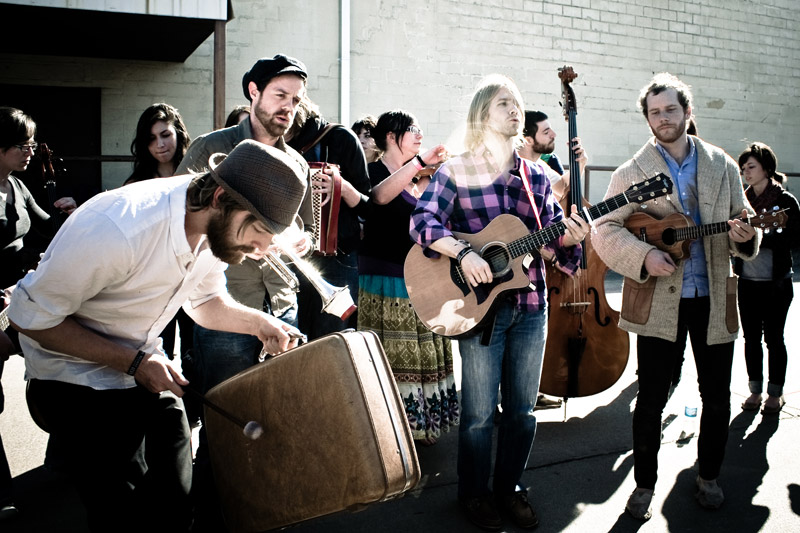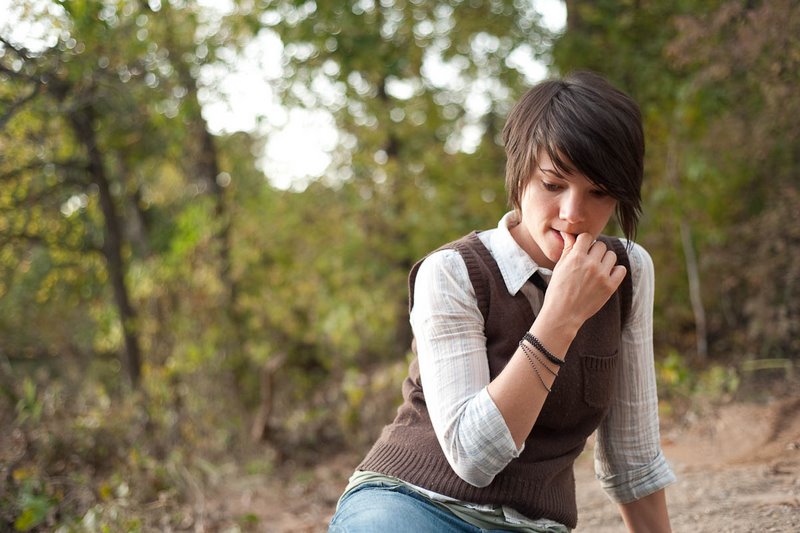Daniel: I’ve learned that when working with kids, things don’t always go as you planned. That’s not always a bad thing – you’re able to see art and teaching in different ways than you would have normally imagined, based on the responses of the kids and the way things flow in the classroom.
Shawna: The biggest thing I’ve learned is how important arts education is for children. We have a great need for arts education, and the arts are often the first thing that goes with budget cuts.
What do you do outside of the after school program, and how does that inform your work with students?
Daniel: I’m a performing musician and artist, so I’m teaching kids about things I know and actually do. I spend just as much – if not more – time practicing the discipline I teach, as opposed to a chemistry teacher who might spend all their time in classroom and little time working directly with chemicals.

Daniel, far left, performs with The Dallas Family Band outside the Flaming Lips concert during NX35 Conferette in March 2010.
Where do you see yourself in 5 years?
Daniel: I don’t typically like to think in concrete terms for the future, but I will say that I’ll be playing music for the rest of my life. Five years from now, I’ll still be a practicing musician and artist. The way that will work itself out is entirely unknown, and I’m not going to worry about that.
Shawna: On the top of a mountain with a lovely hat.
Do you want to share any memorable experiences with the after school program this year?
Daniel: There are always funny things that kids say that make for hours of conversations with my friends later.
Shawna: I really loved hearing that the kids would not stop talking about the artist. Not only did they absorb what I taught them, but they were excited to use that information. [Shawna’s students visited the DMA and viewed the artworks they discussed in the classroom. The group leader told Shawna that she had to adjust the timing of their visit because the students wanted to tell her everything they remembered about the artist.]
